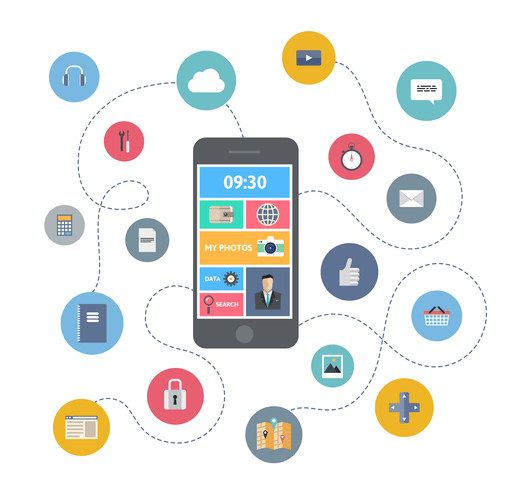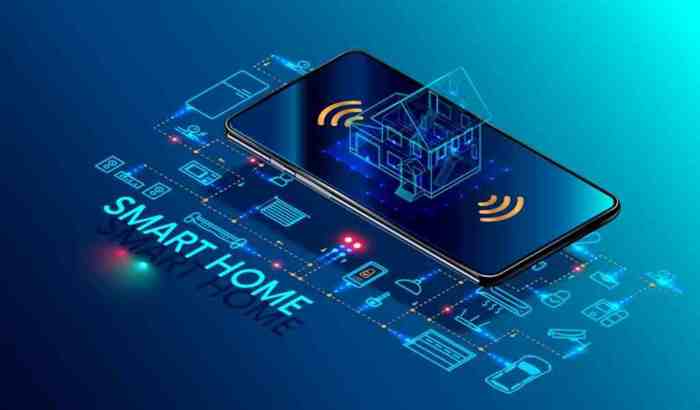This solution can enhance the efficiency of IoT applications by reducing latency and ensuring data is processed locally. Popular fog computing applications include sensible grids, good cities, good buildings, automobile networks and software-defined networks. In order to operate effectively, sensible cities must respond to rising and falling demands, decreasing manufacturing as wanted to remain cost-effective. This means that smart grids demand actual time electrical consumption and production data. These kinds of sensible utility methods often combination data from many sensors, or need to face up to distant deployments. This is as a end result of both fog and cell edge computing purpose to scale back latency and improve efficiencies, however they process knowledge in barely different locations.

Monitoring providers usually embrace software programming interfaces (APIs) that hold monitor of the system’s performance and resource availability. Monitoring systems make sure that all finish units and fog nodes are up and communication isn’t stalled. Sometimes, waiting for a node to free up could additionally be dearer than hitting the cloud server. Monitors can be utilized to audit the present system and predict future useful resource requirements based on utilization. Edge computing is a subset of fog computing that entails processing knowledge proper on the point of creation. Edge units include routers, cameras, switches, embedded servers, sensors, and controllers.
Highlighting this trend is the Fog World Congress that highlights this growing know-how. This lack of consistent access results in conditions the place data is being created at a rate that exceeds how fast the network can move it for analysis. This also results in issues over the safety of this knowledge created, which is becoming more and more widespread as Internet of Things devices turn into extra commonplace. Fog computing, against this, can outnumber its potential purchasers without risking a bottleneck as a result of the units carry out much of the data collection or computation. It’s the outer «edge» of the cloud, the part of a cloud that touches all the way down to the bottom.
Aspiring ethical hackers can get licensed via EC-Council’s certified moral hacker course – C|EH program. Sensors inside the device periodically notify the broker about the amount of vitality being consumed via periodic MQTT messages. Once a device is consuming excessive energy, the notification triggers the app to offload a variety of the overloaded device’s tasks to other gadgets consuming less fog vs cloud computing energy. Jonas P. DeMuro is a contract reviewer masking wi-fi networking hardware. This knowledge explosion has, however, left organizations questioning the quality and quantity of information that they store in the cloud. Cloud costs are infamous for escalating quickly, and sifting via petabytes of information makes real-time response tough.
The notification message is sent via periodic MQTT messages because the AGV continues its motion. The common updates from the AGV can then be used for various functions including monitoring the location of inventories or materials being transported throughout specified zones. He contributes to NetworkWorld.com and is the writer of the Cloud Chronicles blog.
What Is Fog Computing? Definition, Purposes, Every Thing To Know
When a flexible interfacing program isn’t out there for this linking, things can get messy rapidly. Web-based providers and APIs must be created while maintaining new physical and virtual sensors in mind. Besides integration with different fog nodes, the fog engine should additionally seamlessly combine with the prevailing cloud resolution.
This was as a result of fog is referred to as clouds which might be close to the bottom in the same means fog computing was related to the nodes that are current near the nodes someplace in between the host and the cloud. It was supposed to convey the computational capabilities of the system close to the host machine. After this gained somewhat reputation, IBM, in 2015, coined an analogous term known as “Edge Computing”.
What Are The Differences Between Fog Computing And Cloud Computing?
Decentralization and flexibility are the main difference between fog computing and cloud computing. Fog computing, additionally referred to as fog networking or fogging, describes a decentralized computing structure located between the cloud and devices that produce information. This versatile structure allows users to put assets, together with functions and the info they produce, in logical places to enhance efficiency. Fog networking complements — doesn’t substitute — cloud computing; fogging enables short-term analytics at the edge, whereas the cloud performs resource-intensive, longer-term analytics. Although edge gadgets and sensors are where knowledge is generated and picked up, they generally haven’t got the compute and storage assets to carry out superior analytics and machine learning tasks.
- Fog computing is a decentralized computing infrastructure or process in which computing sources are located between the info supply and the cloud or another data heart.
- Instead of sending all of their data to the cloud, linked industrial machines with sensors and cameras now acquire and analyze data locally.
- Fundamentally, the event of fog computing frameworks provides organizations more choices for processing information wherever it is most appropriate to do so.
- Other massive information sets that are not timely for the specified task are pushed to the cloud.
- However, a cell resource, corresponding to an autonomous automobile, or an isolated resource, similar to a wind turbine in the midst of a area, would require an alternate form of connectivity.
- Fog computing maintains a variety of the features of cloud computing, where it originates.
Unfortunately, many states are nonetheless not Industry four.0 prepared, and remote industrial facilities regularly lack the ultra-fast internet connections required for interconnectivity. The feasibility of the idea of sensible manufacturing is questioned by the nonprofit group Connected Nation, which details the difficulties of the country’s present plans for rural broadband development. After all, an industrial plant that’s fully networked produces several https://www.globalcloudteam.com/ hundred terabytes of knowledge every day. This leaves huge volumes of information that can not be centrally dealt with using well-established applied sciences or wirelessly downloaded from the cloud. Since fog components take up some of the SLA commitments of the cloud, high availability is a must. The useful resource supervisor works with the monitor to determine when and the place the demand is high.
What Is Edge Computing?
One of the largest challenges in fog computing is security, which isn’t as straightforward with a decentralized, native setup. All data transmission should be encrypted, especially for the explanation that switch mode is primarily wi-fi. Application signature validation is one other essential step with utility service requests. Even when saved quickly, delicate person knowledge is certain by compliance rules. User habits profiling is one other function that adds an extra layer of safety. Enterprises are most likely to go for a centralized strategy with technical infrastructure as administration turns into straightforward.

In 2015, Cisco partnered with Microsoft, Dell, Intel, Arm and Princeton University to form the OpenFog Consortium. Other organizations, including General Electric (GE), Foxconn and Hitachi, also contributed to this consortium. The consortium’s major goals were to both promote and standardize fog computing.
Fog nodes can detect anomalies in crowd patterns and mechanically alert authorities if they discover violence within the footage. It can be used to automate sure occasions, such as turning on water sprinklers based mostly on time and temperature. Keeping evaluation nearer to the information supply, especially in verticals where every second counts, prevents cascading system failures, manufacturing line shutdowns, and different major issues.
In edge computing, the information generated by these gadgets are stored and computed on the system itself, and the system doesn’t take a look at sharing this data with the cloud. Edge computing, a distributed computing mannequin, processes knowledge and purposes on the fringe of the network, near the data supply. By distinction, in the traditional centralized model of cloud computing, information and purposes are saved in a central location and accessed over the community. Fog computing can be utilized to support a variety of applications that require information to be processed at the fringe of the community. In many circumstances, transferring compute and storage assets closer to the information supply improves efficiency and reduces costs.
The group Smart Manufacturing Leadership Coalition (SMLC) is in cost of the public-private effort «good manufacturing». The aim is for industrial crops and logistics networks to autonomously prepare work operations whereas increasing power and manufacturing efficiency. A fog computing framework can have a selection of parts and features depending on its software. It may embrace computing gateways that accept data from information sources or numerous assortment endpoints such as routers and switches connecting property inside a community. Smart cities and sensible grids Like connected automobiles, utility techniques are more and more using real-time data to more efficiently run methods. Sometimes this knowledge is in distant areas, so processing close to where its created is important.

According to Domo’s ninth annual ‘Data Never Sleeps’ infographic, 65% of the world’s inhabitants — around 5.17 billion folks — had access to the internet in 2021. The amount of information consumed globally was 79 zettabytes, and that is projected to develop to over one hundred eighty zettabytes by 2025. The rapid progress of wi-fi technology has given cellular system users super computing energy. Fog computing is a decentralized infrastructure that places storage and processing parts at the edge of the cloud.
Instead of sending all of their data to the cloud, linked industrial machines with sensors and cameras now acquire and analyze information domestically. In a distributed data fog computing paradigm, processing this knowledge locally resulted in a 98% discount in the number of information packets transported whereas retaining 97% data correctness. The vitality savings are perfect for efficient vitality use, a critical side when using battery-operated devices. Some specialists believe the expected roll out of 5G mobile connections in 2018 and beyond might create extra alternative for fog computing. “5G expertise in some cases requires very dense antenna deployments,” explains Andrew Duggan, senior vice president of technology planning and community architecture at CenturyLink. In some circumstances antennas have to be lower than 20 kilometers from each other.
